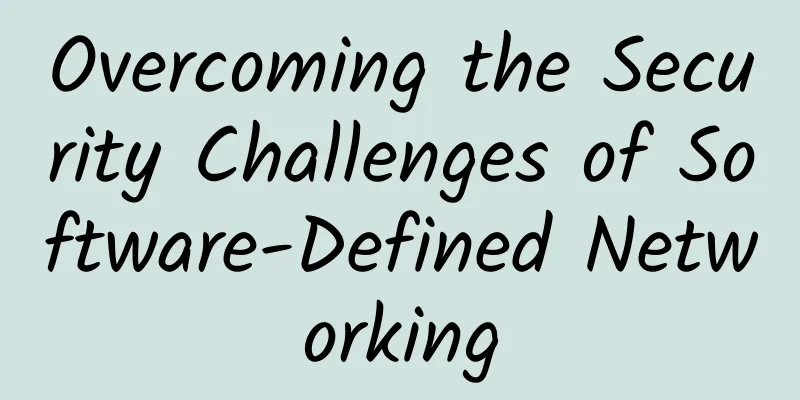There are four misunderstandings about network intelligence

|
If you don't talk about AI after dinner, you feel like you are not a member of society. But do you really understand network intelligence? Is your enterprise network in the automation stage or the intelligent stage? The following are some misunderstandings about network intelligence:
I think tool intelligence is network intelligence Some people think that using intelligent tools to manage the network will make the network intelligent. However, the organic combination of communication network and artificial intelligence technology is that the network can intelligently capture business intentions, implement strategies and network status perception, and automatically deploy and predictively maintain the network. Therefore, it must rely on big data, cloud computing, and high-performance computing chips. It must also use artificial intelligence technologies such as model building and machine learning to process, learn, and analyze massive and rich network data, and promptly feed back the analysis results to all aspects of network operations to provide a reliable basis for decision-making. However, at this stage, most enterprise networks do not have such a highly intelligent system. Some enterprises have not even fully realized network automation, let alone network intelligence. For some enterprises, network intelligence is equivalent to tool intelligence, which is a blind man touching an elephant. Although the use of network automation management tools has greatly improved the centralization of control and network utilization, there is still a long way to go before achieving network intelligence. Think network automation is enough Network complexity is growing exponentially, and it is necessary to configure network equipment intelligently and manage it in a refined manner. However, some companies are beginning to feel that the existing network automation is sufficient and there is no need to upgrade to network intelligence. But in fact, managing the network is challenging because business continuity depends on network availability. A survey found that 59% of Fortune 500 companies experience at least 1.6 hours of downtime per week. Obviously, relying solely on network automation is not enough to cope with the changing status quo. Network intelligence solutions have more end-to-end network visibility and can expand intelligently as network complexity grows and demand changes. I thought that making the network smart could save money. In order to reduce enterprise investment, many enterprises are constantly seeking intelligent solutions to replace manpower, and network systems are no exception. So can network intelligence save money? Not necessarily, at least the initial investment will not be saved. Imagine that dynamic network intelligence requires more and more advanced network hardware equipment to build a huge data collection, analysis, and processing system, and these obviously require enterprises to continue to invest in every link. So don’t ever think that making your network smart can save money. At least in the early stages of a project, saving money is nothing more than wishful thinking. Intelligence for intelligence's sake Of course, for many enterprises, if they want to have intelligent networks, they must do so within their means, and never pursue intelligence for the sake of intelligence. Otherwise, not only will limited funds have to be invested in long-term procurement and optimization, leading to tight cash flow, but also normal business development and planning may be damaged, which is really not worth the loss. In addition to the heavy spending on software and hardware, the recruitment and training of network operation and maintenance personnel is also indispensable, because no matter how good the solution is, it ultimately requires people to implement, test and operate it, and these soft costs are often not low. Conclusion Network intelligence is becoming a real requirement for enterprises to support business process management, intent-based networking, automated compliance monitoring, advanced analytics, and span complex, multi-domain, and multi-vendor environments. However, how to avoid falling into misunderstandings obviously requires enterprises to make choices based on their own strengths. |
<<: In the era of the Internet of Everything, the decade-long evolution of a remote control software
>>: Considerations and conclusions of Iperf network throughput/bandwidth testing
Recommend
OSI seven-layer and TCP five-layer protocols, why TCP/IP protocol wins
[[278277]] 1. OSI Reference Model 1. Origin of OS...
Megalayer US optimized bandwidth VPS simple test
The tribe has shared information about Megalayer ...
What is the difference between RJ45 port and RJ11 port? Learn more in one article!
Cables and connectors have been an integral part ...
Server-Speaks-First is a bit of a bummer, protocol detection and opaque ports in Linkerd 2.10
[[416375]] This article is reprinted from the WeC...
H3C's development resilience: Building a solid digital foundation with pragmatic technological innovation
In the development of the digital economy, innova...
In the third quarter, the penetration rate of fixed broadband households in my country reached 59.6%
[[177287]] According to the "China Broadband...
Nokia deploys 5G SA private network for crane manufacturer Konecranes
Nokia has announced a partnership with EDZCOM, a ...
How to choose a text message service provider? Borei Data's real phone monitoring helps companies detect text message "stealing"
[51CTO.com original article] Speaking of text mes...
High cost-effectiveness and high performance at your will! Huawei Cloud's best-selling server evolves again
[Original article from 51CTO.com] The global econ...
Why is it considered a fantasy for Internet giants to operate “a nationwide LoRa network”?
On August 17, China Tower, the world's larges...
Megalayer: Starting from 24 yuan/month-1GB/50G SSD/10M CN2/San Jose & Hong Kong & Singapore data centers
Megalayer is a foreign hosting company registered...
OlinkCloud: $4/month KVM-1GB/10G SSD/500GB/Germany
Olink.Cloud is said to be a site under the hostin...
5G commercial use is still not good enough in the past two years? Is 5G really useless?
[[420040]] Before we knew it, 5G has been officia...
Risks and opportunities in the 5G era
At the end of 2018, the 5G frequency allocation o...
What is the difference between wireless repeater and Mesh? This article will teach you how to use your home network well
At present, people's lives are becoming riche...









